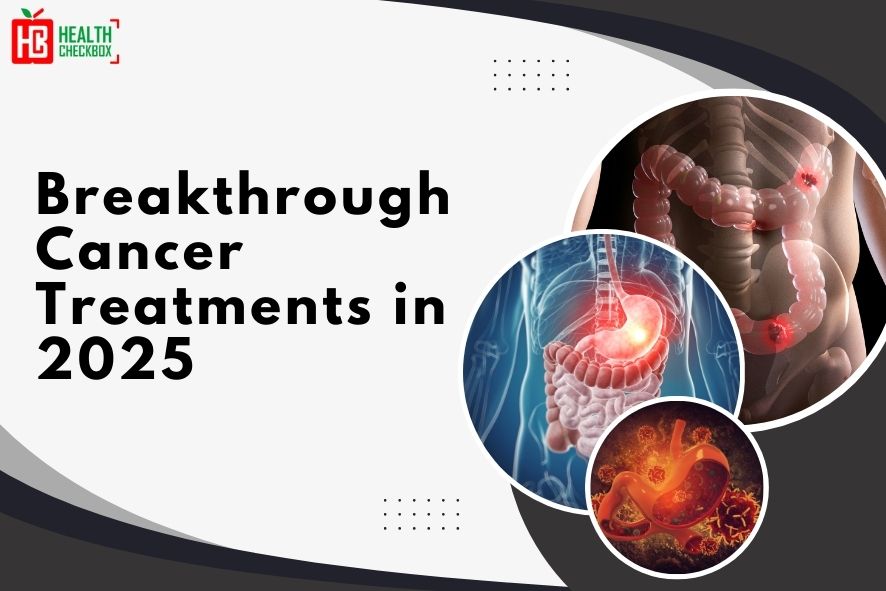When the uncontrolled growth of harmful cells multiply in the human body, it signals the start of cancer. Some of the most significant and still relevant discoveries in cancer care occurred decades ago. In 2022, just about ten million people died due to cancer-related conditions. In this blog, we will see the most recent cancer treatments update for 2025 and how these affect the ill-health of patients.
Although there are various treatment options such as targeted therapy, immunotherapy, precision medicine, and radiation therapy, all of these have undergone tremendous modification and are still being researched further. These new techniques have given a new approach to the way we see cancer. They can provide the patients with more tailored, effective, and minimally intrusive options. Due to the advanced medical technology, survival rates have increased and the side effects have come down.
Advances in Cancer Treatments for Children and Adults
The advanced treatment options that have gained a grip in 2025 have better lives and created a strong dedication in the patients. Every year, technology is rapidly changing with new medical devices coming up to diagnose and treat cancer. Patients are keen to explore the new types of cancer treatments coming up and these range from precise medicine to immunotherapy.
Some of the latest cancer treatment options available to ill-health people are as follows:
Liquid Biopsies
- This is a non-invasive blood test that can find various types of cancer cells present in the body. This biopsy is accurately able to detect cancer that is in the initial stages. It is done by looking into the circulating malignant genes known as ctDNA or blood, urine, or saliva.
- A slender needle is made to pass through the skin to identify the cancer cells. The cancer cells are taken away and sent to a nearby lab for the presence of tumor cells.
Robotic Surgery
Here a robot is utilized to perform the procedure that is more precise, flexible, and takes less time to carry out the surgery. Prostrate, colon, and gynecological cancers are treated with high accuracy in this surgery. This type of procedure gives the patients quick recovery and short hospital stays.
Tumor Culture Therapy
Malignant cells from the patient are taken through a biopsy. A model is made to develop individualized cancer therapies. The cells are then grown in a lab utilizing 2D or 3D culture techniques. The cells can afterward be used to assist create a personalized treatment plan and test the efficacy of various anticancer medications.
Immunotherapy
This procedure uses the body’s immune system to find and combat cancer cells. It is a new technique and it will produce accurate and long-lasting responses to fight cancer cells. Checkpoint inhibitors, CAR T-cell therpy, and cancer vaccines will still modify cancer care in 2025. Patients with once-incurable cancers now are destined for a better future.
Targeted Therapy
This makes use of drugs and medications that target or kill specific cancer cells. It is quite an effective means to stop the aberrant cancer cells. The malignant cell size decreases as they block certain molecules in the diseased cells. Research and development ensures that new drugs are safe to use before they are made public.
Risks Associated with the Advanced Cancer Treatments
Any modern technology that is recently introduced has benefits and risks associated with it. These innovations can only reduce the symptoms or make the person live somewhat longer.
Some risks associated with these new cancer treatments are listed below:
- Side Effects: Negative effects associated with experimental treatments might range from moderate to severe.
- Ineffectiveness: The newly introduced treatment may not perform any better than the regular treatment.
- The superiority of raw resources: The quality of raw materials utilized in advanced therapies may be an issue.
- Bone and cardiovascular issues: Antiretroviral therapies may raise the risk of bone and cardiovascular issues.
Conclusion
The end goal of these new cancer treatments is to prevent the malignant cells from spreading further. The year 2025 has been a promising year for the new treatments introduced for the benefit of ill-health people.
If you or anyone closely related to you is suffering from cancer, you should inform the person about these innovative treatments for the malignant tumor.

